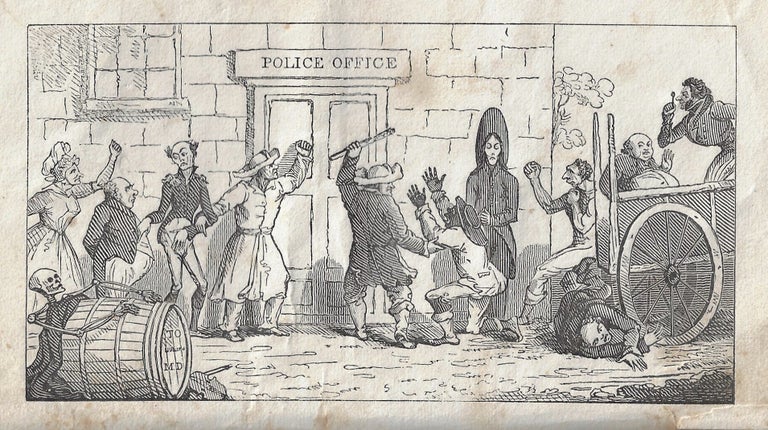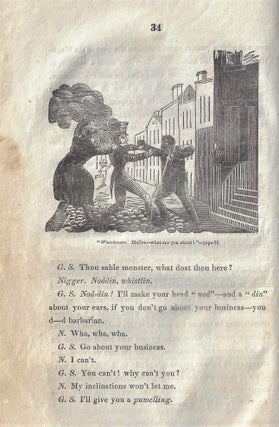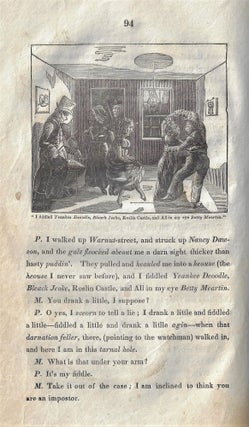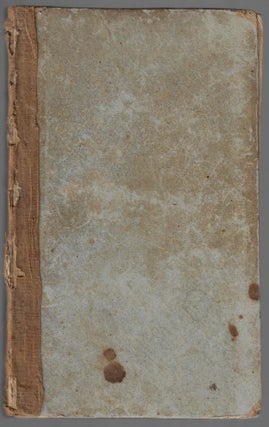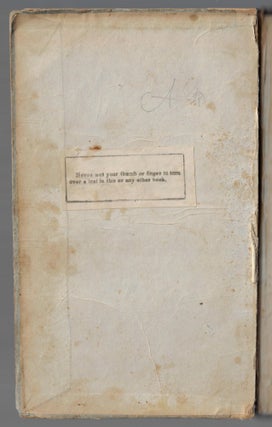Skillman's New-York Police Reports, Illustrated with Engravings. Written in 1828-29
New York: Ludwig & Tolefree, 1830.
First Edition. Hardcover. Good. 8.5 x 5.25 inches, 151 pp, with engraved frontispiece and four additional illustrations. In original boards, with what appears to be later (but not recent) cloth over the original cloth spine. Boards worn, front board only just attached, some losses to spine cloth; good. Early ownership signature (Joshua Hodsdon, Yarmouth) on front free endpaper, printed label on rear pastedown admonishing the reader to "Never wet your thumb or finger to turn over a leaf in this or any other book." Little is known about John Skillman, but he evidently frequented the regular morning court hearings in Lower Manhattan for people who had been arrested the previous day for relatively minor crimes such as drunkenness, lewd behavior, vagrancy, petty theft, and prostitution. His reports on these crimes, which were probably modeled on those that had recently begun appearing regularly in London newspapers, take the form of brief, pun-filled comic vignettes or dialogues between the accused and the magistrate. For example, "James G----- was sent by his employer with 10 shillings to buy screws---bought 5 shillings worth, and expended the rest of the money in his own way. Is put, in poetical language, under the screws," and "Mary Stevenson entertains the opinion that 'time is money;' and having no instrument or machine whereby she might keep proper 'note of time,' thought proper to obtain one at all hazards. She is now in close confinement for a time." Beneath the humor, however, are characterizations of male and female defendants of different races, classes, ethnic backgrounds -- some flattering, some not. Scholar Brian Baaki has argued that by placing "an overwhelming volley of black malefactors" at the beginning of the text, Skillman "tries to manufacture an association between African-Americans and crime." There may be room for a more nuanced reading, but without doubt the book is of interest in the broader context of the social and cultural history of early nineteenth century New York. Sabin 81589, American Imprints 3498.
Item #21128
Price: $750.00



